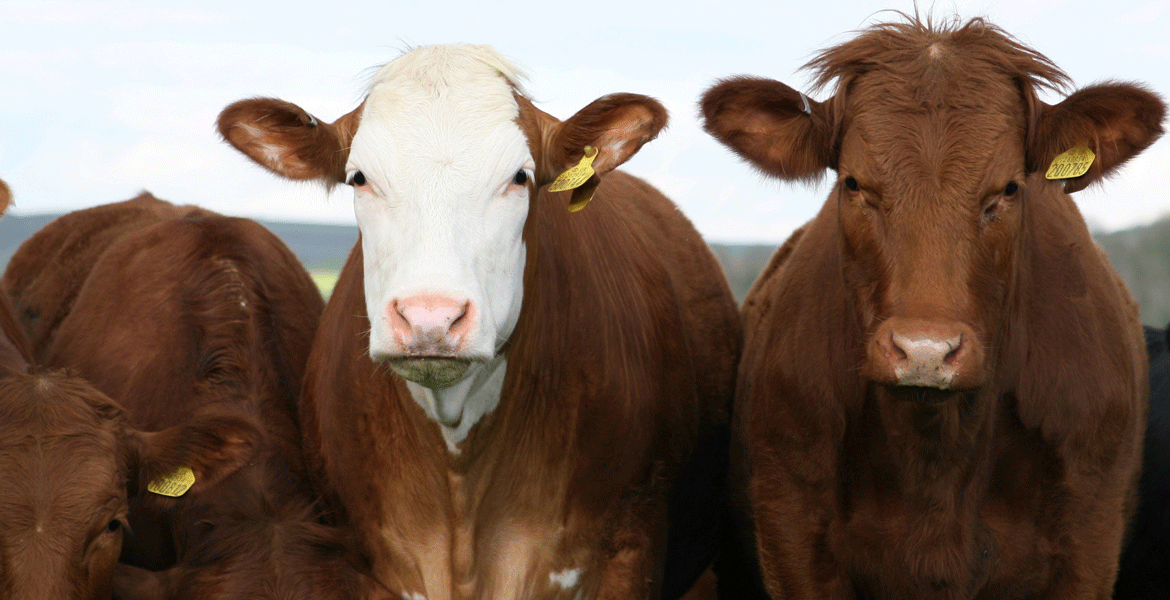
OSU Veterinary College Launches Integrative Beef Cattle Program for Veterinarians
Tuesday, August 11, 2020
Oklahoma State University’s College of Veterinary Medicine recently launched the first phase of its Integrative Beef Cattle Program for Veterinarians funded by a U.S. Department of Agriculture National Institute of Food and Agriculture Veterinary Services Grant in excess of $235,000.
“In the veterinary community, everybody is well aware that there is a shortage of veterinary services in many rural areas largely affecting beef producers and other livestock producers as well as pets,” said Dr. John Gilliam, clinical associate professor of food animal production medicine and field services at the veterinary college and co-leader on the grant. “Our ultimate goal is to produce an education program to increase the number, the stability, and the longevity of rural veterinary practices serving the beef producers across the state.”
To launch the first phase of the program, the veterinary college is conducting research by distributing surveys to veterinarians, veterinary students, and producers.
“We know we have a rural veterinary shortage but as far as the specifics related to Oklahoma, these first surveys will help us determine where is the specific need,” said Dr. Rosslyn Biggs, director of continuing education and beef cattle extension specialist, and co-project lead. “We’ll also learn some finer details such as what is the average size herd that most practitioners serve? What travel distances do they incur? We also want to know if there are needs of producers, that because of the limited number of rural veterinarians, they are not able to have those needs met.”
“If we can determine what the needs are in rural communities, what some of the reasons for the shortages are, we can figure out ways to address those needs,” added Gilliam.
Once they identify specific needs of veterinary practices within rural communities, the team will move into phase two of the program.
“The secondary phase is to develop an educational program for veterinarians to provide them with additional skill sets that may allow them to expand their practice area and provide additional services to beef producers, which will help those producers be more profitable,” explained Gilliam. “A broader service portfolio can improve the financial stability of the veterinarian and his or her clinic and thus their longevity in the community.”
“We will bring together beef cattle practitioners here in Oklahoma and allow them to sit side by side with their colleagues to benefit from the expertise we have here at the College of Veterinary Medicine as well as our partners in extension from both animal science and agricultural economics,” said Biggs. “We want to give veterinarians more tools in the toolkit so to speak so they can expand their services to meet the growing needs of beef cattle producers when it comes to technology for instance. We want to give rural veterinarians opportunities to move to more herd health services that can better prepare and serve the herds they currently have but also expand those practices, which will create more sustainability in their practice.”
“The third phase or goal of the project is to connect veterinary students, who are interested in rural practice, with practitioners currently engaged in rural practice,” said Gilliam. “This provides mentoring and direction for those veterinary students and also gives veterinarians, who may be looking to hire associates or potentially sell a practice at some point in the future, a connection to those interested in rural practice.”
“It’s important to encourage more veterinary students to enter rural veterinary practice to fill vacancies that we’re hearing from rural practitioners that they want to fill and specifically to serve those beef cattle producers, who are so integral to the economy here in Oklahoma,” added Biggs. “This program is a collaborative effort between the College of Veterinary Medicine and Extension. We’re working really hard to continue to serve Oklahoma and make sure that we’re supporting the beef cattle industry, which is one of the largest and most important here in Oklahoma.”
“This program will benefit producers by addressing the need for veterinary services in rural communities, by increasing the veterinary services available by adding additional clinics or adding services to current clinics,” said Gilliam. “The veterinarians in rural areas will gain more skills helping to make their practices more sustainable. And veterinary students will have more opportunities to enter stable veterinary practices in rural areas where they can be in practice and make a good living and have a stable income and career.”
“A final goal is to have success with the Integrated Beef Cattle Program for Veterinarians and create a template that can be modeled across the United States,” said Biggs.
According to Drs. Biggs and Gilliam the surveys should be out in late August or the beginning of September. They have lined up some great speakers for webinars on the needs of recruiting and retaining veterinarians that impact the food supply, which is ultimately important for consumers. Also working on the project are: Jerry Malayer, Ph.D., professor, McCasland Chair and associate dean for research and graduate education, College of Veterinary Medicine; Derrell Peel, Ph.D., agricultural economics, Ferguson College of Agriculture; David Lalman, Ph.D., professor, Harrington Chair, and extension beef cattle specialist, Ferguson College of Agriculture; Carlos Risco, DVM, DACT, dean, College of Veterinary Medicine; and Paul Beck, Ph.D., associate professor and Denis and Marta White Endowed Chair, Ferguson College of Agriculture. Also consulting on the project is Richard Prather, DVM, owner of Ellis County Animal Hospital in Shattuck, Oklahoma.
MEDIA CONTACT: Taylor Bacon | Public Relations and Marketing Coordinator | 405-744-6728 | taylor.bacon@okstate.edu
